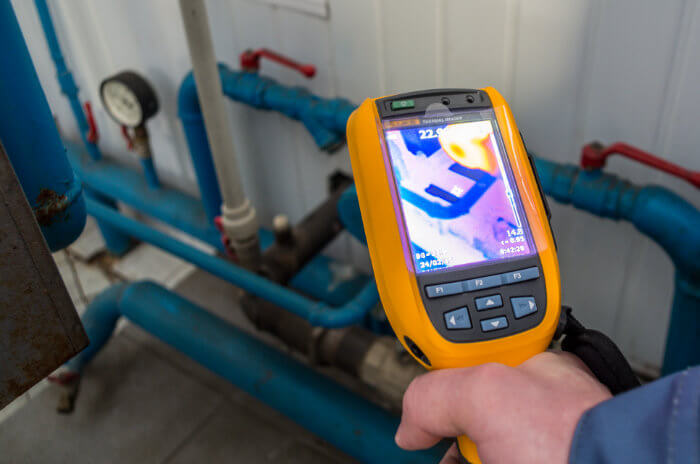- 8am to 5pm, Sat 9am - 2pm, Holiday Timings May Vary
- 323-696-9101 | 844-444-0155
- bluewaterplumbinginc@hotmail.com
Leak detection refers to the process of identifying and locating leaks in pipes, plumbing systems, or other structures. Detecting and repairing leaks promptly is crucial to prevent water damage, conserve resources, and maintain the integrity of infrastructure. Leak detection methods vary depending on the type of system and the nature of the suspected leak. Here are some common leak detection techniques:

Visual Inspection: In some cases, leaks may be visible through a simple visual inspection. This could involve looking for water stains, puddles, or damp spots on walls, ceilings, or floors.
Listening Devices: Acoustic leak detection involves using specialized listening devices to detect the sound of water escaping from pipes. Technicians use headphones or electronic equipment to amplify the sound of the leak, helping them pinpoint its location.
Pressure Testing: Pressure testing involves pressurizing a system and monitoring for pressure drops, which can indicate the presence of a leak. This method is commonly used in plumbing systems.
Infrared Technology: Infrared thermography can be employed to detect temperature variations associated with water leaks. It is particularly useful for detecting hidden leaks behind walls or in concealed spaces.
Tracer Gases: In some cases, tracer gases such as helium or hydrogen can be introduced into a system. Detectors can then identify the gas escaping from the leak, helping locate the source.
Dye Testing: Dye testing involves adding a colored dye to a system to trace the path of water and identify leaks. This method is commonly used in plumbing systems and is especially effective in locating leaks in toilets.
Moisture Meters: Moisture meters can detect elevated moisture levels in building materials, helping identify areas affected by water leaks.
Ground Penetrating Radar (GPR): GPR uses radar pulses to image the subsurface, allowing technicians to identify anomalies in materials that may be associated with leaks.
Digital Monitoring Systems: Advanced technologies involve the use of digital sensors and monitoring systems that can provide real-time data on water usage, pressure, and potential leaks. These systems can alert property owners or facility managers to abnormalities.
Leak detection is crucial in various contexts, including residential plumbing, commercial buildings, industrial facilities, and municipal water distribution systems. Early detection and prompt repair of leaks help prevent property damage, reduce water waste, and conserve resources. Professional plumbers or technicians with expertise in leak detection often use a combination of these methods to accurately identify and address leaks.